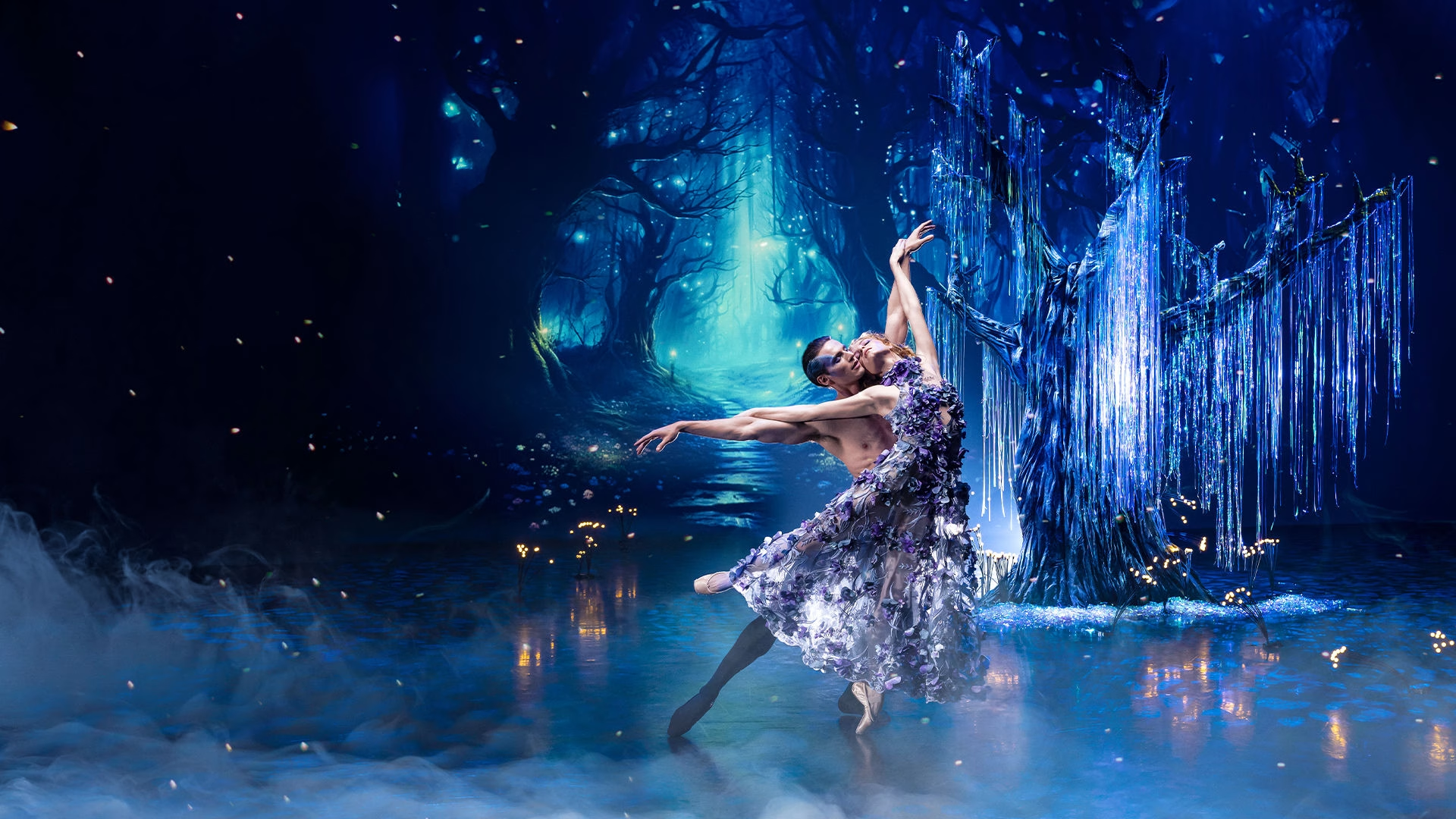In today’s theatre scene, the term “immersive” is often thrown around but rarely delivered. While it promises to break down the fourth wall and envelop the audience in a thrilling new world, this production of A Midsummer Night’s Dream at the Bridge Theatre is more of a gentle breeze than a whirlwind.
Led by the charming JJ Feild as the suave Oberon, Nicholas Hytner’s interpretation of Shakespeare’s whimsical tale dazzles aesthetically. It’s slick, modern, and impressively polished, but the much-touted immersion feels like an unfulfilled promise.
Let’s discuss the “standing pit,” a feature the Bridge has made its hallmark. Here, audience members gather on the flat stage for a lower ticket price, watching as actors occasionally dance around them or request they make way for rising platforms. However, this arrangement feels more like a courteous obstacle than an authentic immersion into the narrative. Rather than getting lost in an enchanted forest, attendees are gently guided by ushers, making their way to exit routes.
The closest we get to an immersive moment is when the exuberant Puck (David Moorst) makes a daring leap near someone’s plastic wine cup. That and a few actors in trendy Athens-inspired costumes brushing by is about as enchanting as it gets. If you’re seeking to be whisked away into a magical world of dreams, prepare instead for a mildly interactive afternoon akin to a relaxed visit to an art gallery.
Now, let’s consider the fairies. It’s disappointing to see talented young performers in sheer trousers trying to embody the enigmatic spirits from Shakespeare’s text. When portrayed effectively, these fairies should thrill and unsettle, acting as unpredictable beings who could enchant or endanger at whim. Instead, they seem like they’re on a break between drama school and minor film projects.
The fairies exhibit poised movements and polished choreography more suited to a student show than to the court of Titania. Their performance, though technically sound, lacks the wildness and intensity that the roles demand. One longs for captivating aerialists or fire-spinners to bring these characters to life, performers who embody the extremes of the ethereal.
What we see instead are cautious flips and gentle interpretations, which feel too safe. Given the sophisticated staging and witty script, this lack of daring falls short of the expectations for a modern audience.
Nevertheless, the production isn’t without its highlights. The intriguing decision to swap Titania’s lines with Oberon’s creates theatrical magic, and the casting remains solid if not groundbreaking. JJ Feild delivers a captivating Oberon, exuding charisma that balances RSC refinement with a rockstar’s flair. His chemistry with Titania sparks just enough energy to remind us of Shakespeare’s enduring brilliance.
Susannah Fielding’s portrayal of Titania lacks the magnetic presence of previous actors in the role, although she doesn’t shy away from delivering her lines with precision. Emmanuel Akwafo as Bottom offers a delightful contrast, infusing the performance with innate humor that elevates the entire production.
The Mechanicals provide a refreshing burst of energy, bringing genuine warmth and comedic charm to the stage. Their rendition of Pyramus and Thisbe offers a delightful blend of mishap-laden disaster and physical comedy, capturing the essence of the working-class spirit that underpins Dream.
On a technical level, the production shines. Bruno Poet’s lighting casts enchanting hues of green and deep purple, creating an ambiance that hints at otherworldliness. Paul Arditti’s sound design adds a layer of magical undertones, while Christina Cunningham’s costumes smartly blend contemporary fashion with classic elegance, ensuring the visual elements are top-notch.
Yet, what this production profoundly lacks is edge. Shakespeare’s Dream explores dualities—love and cruelty, illusion and reality, chaos and control. Despite its sleek presentation, the production leans too heavily into the lighthearted, rendering the forest more of a fashion display than a domain of uncertainty. The enchantments lack the thrill of danger, making the stakes feel disappointingly low.
Hytner is no stranger to directing a well-crafted show, and it’s likely audiences will leave with smiles on their faces. However, one can’t help but wonder how much more magical it could have been if the fairies had truly taken flight—if the audience had been swept into the dream instead of remaining passive observers. Immersive theatre should evoke wonder and astonishment, but here, it’s more of a gentle nudge.
A Midsummer Night’s Dream continues at the Bridge Theatre until August 20.













